Abstract:
The Deployable Optical Receive Aperture (DORA), a new technology being developed jointly between Jet Propulsion Laboratory (JPL) and Arizona State University (ASU), is ba...Show MoreMetadata
Abstract:
The Deployable Optical Receive Aperture (DORA), a new technology being developed jointly between Jet Propulsion Laboratory (JPL) and Arizona State University (ASU), is based on deploying arrays of fast optical detectors to create large receive apertures and seeks to achieve gigabit connectivity at distances of thousands of kilometers. Small spacecraft forming the LunaNet communications network and equipped with optical communications systems, such as the proposed DORA aperture, should be able to communicate at Gigabit per second rates over long distances. This data rate enhancement can allow gigabit per second connectivity between lunar assets (astronauts, rovers, instruments) and the lunar gateway. Under sponsorship of NASA's Small Spacecraft Technology Program (SSTP), JPL is deploying the DORA payload and ASU is developing a 3U CubeSat for a follow-on low-Earth-orbit (LEO) mission to demonstrate DORA's capabilities. The basic DORA payload consists of 5 receiver panels, a transmitting telescope and processing units. Each receiver panel contains dozens of power-combined detectors to mimic a large optical aperture. The total receive aperture of DORA is provided by the sum of the effective detecting area of the 5 panels. The transmit telescope includes a 200mW, 850nm laser and a voice-coil fast steering mirror (FSM). The resulting DORA terminal should be able to provide duplex connectivity at rates up to 1 gigabit per second at the distances of interest. We have designed the entire DORA payload and plan to present the test results of our DORA engineering model. These results include angle-of-arrival, data rate and bit error rate measurements.
Published in: 2022 IEEE Aerospace Conference (AERO)
Date of Conference: 05-12 March 2022
Date Added to IEEE Xplore: 10 August 2022
ISBN Information:
Print on Demand(PoD) ISSN: 1095-323X
Funding Agency:

Jet Propulsion Laboratory, California Institute of Technology, Pasadena, CA, United States
Uriel Escobar received a B.S. in Electrical Engineering from University of Riverside, California (UCR) in 2019 and his Master in Electrical Engineering from University of Riverside, California (UCR) in 2021. He joined JPL in 2019 and has worked in the Advanced RF and Optical Technologies Group, focusing on optical communication testing and has worked on DORA's receiver design.
Uriel Escobar received a B.S. in Electrical Engineering from University of Riverside, California (UCR) in 2019 and his Master in Electrical Engineering from University of Riverside, California (UCR) in 2021. He joined JPL in 2019 and has worked in the Advanced RF and Optical Technologies Group, focusing on optical communication testing and has worked on DORA's receiver design.View more
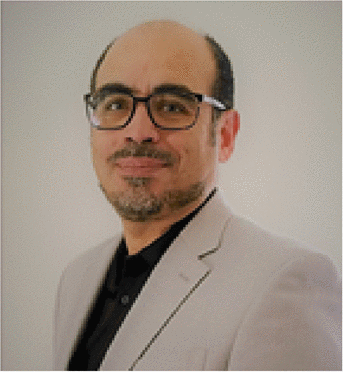
Jet Propulsion Laboratory, California Institute of Technology, Pasadena, CA, United States
Dr. Jose Velazco is a space Technologist at NASA's Jet Propulsion Laboratory where he conducts advanced research and development of new RF and optical technologies and systems for telecommunications, as well as new instrumentation and radar for space exploration. He is pioneering the implementation of free-space optical networks to enable the information superhighway for the next generation of global connectivity. He has ...Show More
Dr. Jose Velazco is a space Technologist at NASA's Jet Propulsion Laboratory where he conducts advanced research and development of new RF and optical technologies and systems for telecommunications, as well as new instrumentation and radar for space exploration. He is pioneering the implementation of free-space optical networks to enable the information superhighway for the next generation of global connectivity. He has ...View more

Jet Propulsion Laboratory, California Institute of Technology, Pasadena, CA, United States
Sean Cornish is pursuing a B.S. in Applied Physics from Biola University, a B.S. in Astronautical Engineering from the University of Southern California, and an M.S. in Astronautical Engineering from the University of Southern California. He has worked for JPL since 2019 in the Advanced RF and Optical Technologies division designing, building, and testing hardware for Optical Communications research. He also works closely...Show More
Sean Cornish is pursuing a B.S. in Applied Physics from Biola University, a B.S. in Astronautical Engineering from the University of Southern California, and an M.S. in Astronautical Engineering from the University of Southern California. He has worked for JPL since 2019 in the Advanced RF and Optical Technologies division designing, building, and testing hardware for Optical Communications research. He also works closely...View more
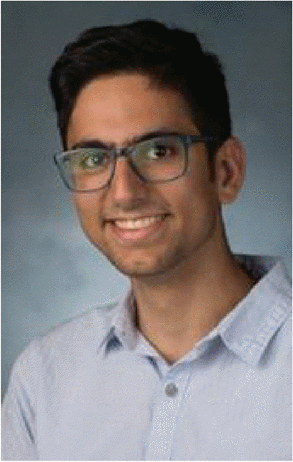
Jet Propulsion Laboratory, California Institute of Technology, Pasadena, CA, United States
Andy Klaib received a B.S. in Electrical Engineering from California State Polytechnic University, Pomona in 2020 and is currently pursuing a M.S. in Electrical Engineering from University of Southern California. He joined JPL in 2018, and he is responsible for DORA's FPGA design and communications software. He specializes in embedded systems and FPGAs.
Andy Klaib received a B.S. in Electrical Engineering from California State Polytechnic University, Pomona in 2020 and is currently pursuing a M.S. in Electrical Engineering from University of Southern California. He joined JPL in 2018, and he is responsible for DORA's FPGA design and communications software. He specializes in embedded systems and FPGAs.View more
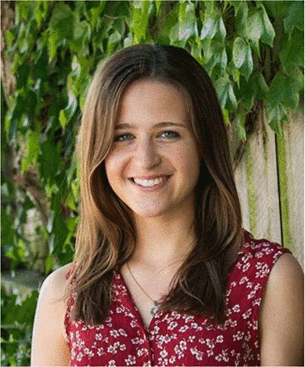
Jet Propulsion Laboratory, California Institute of Technology, Pasadena, CA, United States
Julia Arnold is pursuing her B.S. and MEng degrees in electrical engineering from MIT. She currently works at JPL as an engineering graduate student on digital and analog design.
Julia Arnold is pursuing her B.S. and MEng degrees in electrical engineering from MIT. She currently works at JPL as an engineering graduate student on digital and analog design.View more
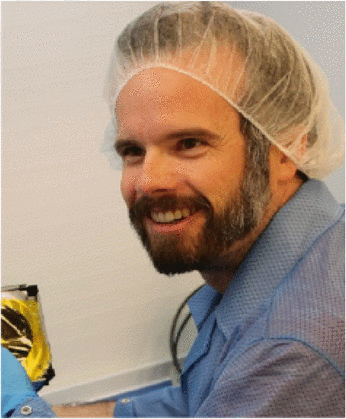
Jet Propulsion Laboratory, California Institute of Technology, Pasadena, CA, United States
Daniel Jacobs received a BS in Physics from New Mexico Tech, a masters in Physics from Montana State University, and a PhD in Physics from University of Pennsylvania. He co-directs the Low Frequency cosmology lab at Arizona State University (ASU) which fo-cuses on development of cosmology via highly redshifted 21cm radiation. He is Associate Director of the Interplanetary Initiative at ASU where he leads the cubesat labor...Show More
Daniel Jacobs received a BS in Physics from New Mexico Tech, a masters in Physics from Montana State University, and a PhD in Physics from University of Pennsylvania. He co-directs the Low Frequency cosmology lab at Arizona State University (ASU) which fo-cuses on development of cosmology via highly redshifted 21cm radiation. He is Associate Director of the Interplanetary Initiative at ASU where he leads the cubesat labor...View more
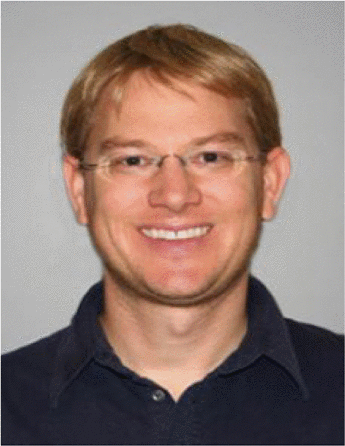
Jet Propulsion Laboratory, California Institute of Technology, Pasadena, CA, United States
Judd Bowman received BS degrees in Physics and Electrical Engineering from Washington University in St. Louis and a PhD in Physics from MIT. He co-directs the Low Frequency Cosmology Lab atArizona State University which focuses on development of cosmology via highly redshifted 21c m radiation
Judd Bowman received BS degrees in Physics and Electrical Engineering from Washington University in St. Louis and a PhD in Physics from MIT. He co-directs the Low Frequency Cosmology Lab atArizona State University which focuses on development of cosmology via highly redshifted 21c m radiationView more
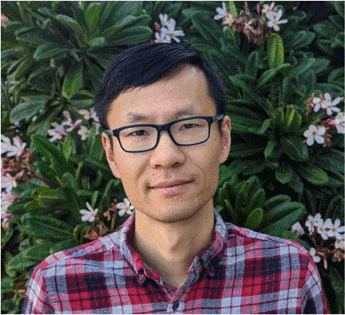
Jet Propulsion Laboratory, California Institute of Technology, Pasadena, CA, United States
Lin Yi is a technologist and group supervisor at NASA's Jet Propulsion Laboratory, California Institute of Technology. His research interests are atomic clocks, GNSS and deep space navigation, ultra-fast and DUV laser engineering, precision instrumentation and measurement, software engineering, embedded system architecture, F&T metrology, AMO, and plasma physics, communications, tracking, navigation, timing and radio scie...Show More
Lin Yi is a technologist and group supervisor at NASA's Jet Propulsion Laboratory, California Institute of Technology. His research interests are atomic clocks, GNSS and deep space navigation, ultra-fast and DUV laser engineering, precision instrumentation and measurement, software engineering, embedded system architecture, F&T metrology, AMO, and plasma physics, communications, tracking, navigation, timing and radio scie...View more

Jet Propulsion Laboratory, California Institute of Technology, Pasadena, CA, United States
Uriel Escobar received a B.S. in Electrical Engineering from University of Riverside, California (UCR) in 2019 and his Master in Electrical Engineering from University of Riverside, California (UCR) in 2021. He joined JPL in 2019 and has worked in the Advanced RF and Optical Technologies Group, focusing on optical communication testing and has worked on DORA's receiver design.
Uriel Escobar received a B.S. in Electrical Engineering from University of Riverside, California (UCR) in 2019 and his Master in Electrical Engineering from University of Riverside, California (UCR) in 2021. He joined JPL in 2019 and has worked in the Advanced RF and Optical Technologies Group, focusing on optical communication testing and has worked on DORA's receiver design.View more

Jet Propulsion Laboratory, California Institute of Technology, Pasadena, CA, United States
Dr. Jose Velazco is a space Technologist at NASA's Jet Propulsion Laboratory where he conducts advanced research and development of new RF and optical technologies and systems for telecommunications, as well as new instrumentation and radar for space exploration. He is pioneering the implementation of free-space optical networks to enable the information superhighway for the next generation of global connectivity. He has over 25 years of experience conceiving and carrying out numerous R&D projects. He conceived, developed and patented various cutting-edge technologies including an inter-spacecraft omnidirectional optical communicator and an optical ground terminal. His current research focuses on various small spacecraft mission concepts for low-Earth-orbit, Lunar, and Deep Space applications with the goal of enabling an all-optical spaceborne network. He aims to implement a new interplanetary network architecture along the solar system that uses swarms of optically-interconnected spacecraft as networks for fast communications and novel science. He envisions the interplanetary network as the basis for the space internet that could provide the key connectivity layer required for the future commercial exploration of space.
Dr. Jose Velazco is a space Technologist at NASA's Jet Propulsion Laboratory where he conducts advanced research and development of new RF and optical technologies and systems for telecommunications, as well as new instrumentation and radar for space exploration. He is pioneering the implementation of free-space optical networks to enable the information superhighway for the next generation of global connectivity. He has over 25 years of experience conceiving and carrying out numerous R&D projects. He conceived, developed and patented various cutting-edge technologies including an inter-spacecraft omnidirectional optical communicator and an optical ground terminal. His current research focuses on various small spacecraft mission concepts for low-Earth-orbit, Lunar, and Deep Space applications with the goal of enabling an all-optical spaceborne network. He aims to implement a new interplanetary network architecture along the solar system that uses swarms of optically-interconnected spacecraft as networks for fast communications and novel science. He envisions the interplanetary network as the basis for the space internet that could provide the key connectivity layer required for the future commercial exploration of space.View more

Jet Propulsion Laboratory, California Institute of Technology, Pasadena, CA, United States
Sean Cornish is pursuing a B.S. in Applied Physics from Biola University, a B.S. in Astronautical Engineering from the University of Southern California, and an M.S. in Astronautical Engineering from the University of Southern California. He has worked for JPL since 2019 in the Advanced RF and Optical Technologies division designing, building, and testing hardware for Optical Communications research. He also works closely with the Applied Electromagnetics group at JPL to design and implement electrical and mechanical monitor and control systems for application in the Deep Space Network.
Sean Cornish is pursuing a B.S. in Applied Physics from Biola University, a B.S. in Astronautical Engineering from the University of Southern California, and an M.S. in Astronautical Engineering from the University of Southern California. He has worked for JPL since 2019 in the Advanced RF and Optical Technologies division designing, building, and testing hardware for Optical Communications research. He also works closely with the Applied Electromagnetics group at JPL to design and implement electrical and mechanical monitor and control systems for application in the Deep Space Network.View more

Jet Propulsion Laboratory, California Institute of Technology, Pasadena, CA, United States
Andy Klaib received a B.S. in Electrical Engineering from California State Polytechnic University, Pomona in 2020 and is currently pursuing a M.S. in Electrical Engineering from University of Southern California. He joined JPL in 2018, and he is responsible for DORA's FPGA design and communications software. He specializes in embedded systems and FPGAs.
Andy Klaib received a B.S. in Electrical Engineering from California State Polytechnic University, Pomona in 2020 and is currently pursuing a M.S. in Electrical Engineering from University of Southern California. He joined JPL in 2018, and he is responsible for DORA's FPGA design and communications software. He specializes in embedded systems and FPGAs.View more

Jet Propulsion Laboratory, California Institute of Technology, Pasadena, CA, United States
Julia Arnold is pursuing her B.S. and MEng degrees in electrical engineering from MIT. She currently works at JPL as an engineering graduate student on digital and analog design.
Julia Arnold is pursuing her B.S. and MEng degrees in electrical engineering from MIT. She currently works at JPL as an engineering graduate student on digital and analog design.View more

Jet Propulsion Laboratory, California Institute of Technology, Pasadena, CA, United States
Daniel Jacobs received a BS in Physics from New Mexico Tech, a masters in Physics from Montana State University, and a PhD in Physics from University of Pennsylvania. He co-directs the Low Frequency cosmology lab at Arizona State University (ASU) which fo-cuses on development of cosmology via highly redshifted 21cm radiation. He is Associate Director of the Interplanetary Initiative at ASU where he leads the cubesat laboratory.
Daniel Jacobs received a BS in Physics from New Mexico Tech, a masters in Physics from Montana State University, and a PhD in Physics from University of Pennsylvania. He co-directs the Low Frequency cosmology lab at Arizona State University (ASU) which fo-cuses on development of cosmology via highly redshifted 21cm radiation. He is Associate Director of the Interplanetary Initiative at ASU where he leads the cubesat laboratory.View more

Jet Propulsion Laboratory, California Institute of Technology, Pasadena, CA, United States
Judd Bowman received BS degrees in Physics and Electrical Engineering from Washington University in St. Louis and a PhD in Physics from MIT. He co-directs the Low Frequency Cosmology Lab atArizona State University which focuses on development of cosmology via highly redshifted 21c m radiation
Judd Bowman received BS degrees in Physics and Electrical Engineering from Washington University in St. Louis and a PhD in Physics from MIT. He co-directs the Low Frequency Cosmology Lab atArizona State University which focuses on development of cosmology via highly redshifted 21c m radiationView more

Jet Propulsion Laboratory, California Institute of Technology, Pasadena, CA, United States
Lin Yi is a technologist and group supervisor at NASA's Jet Propulsion Laboratory, California Institute of Technology. His research interests are atomic clocks, GNSS and deep space navigation, ultra-fast and DUV laser engineering, precision instrumentation and measurement, software engineering, embedded system architecture, F&T metrology, AMO, and plasma physics, communications, tracking, navigation, timing and radio science.
Lin Yi is a technologist and group supervisor at NASA's Jet Propulsion Laboratory, California Institute of Technology. His research interests are atomic clocks, GNSS and deep space navigation, ultra-fast and DUV laser engineering, precision instrumentation and measurement, software engineering, embedded system architecture, F&T metrology, AMO, and plasma physics, communications, tracking, navigation, timing and radio science.View more


